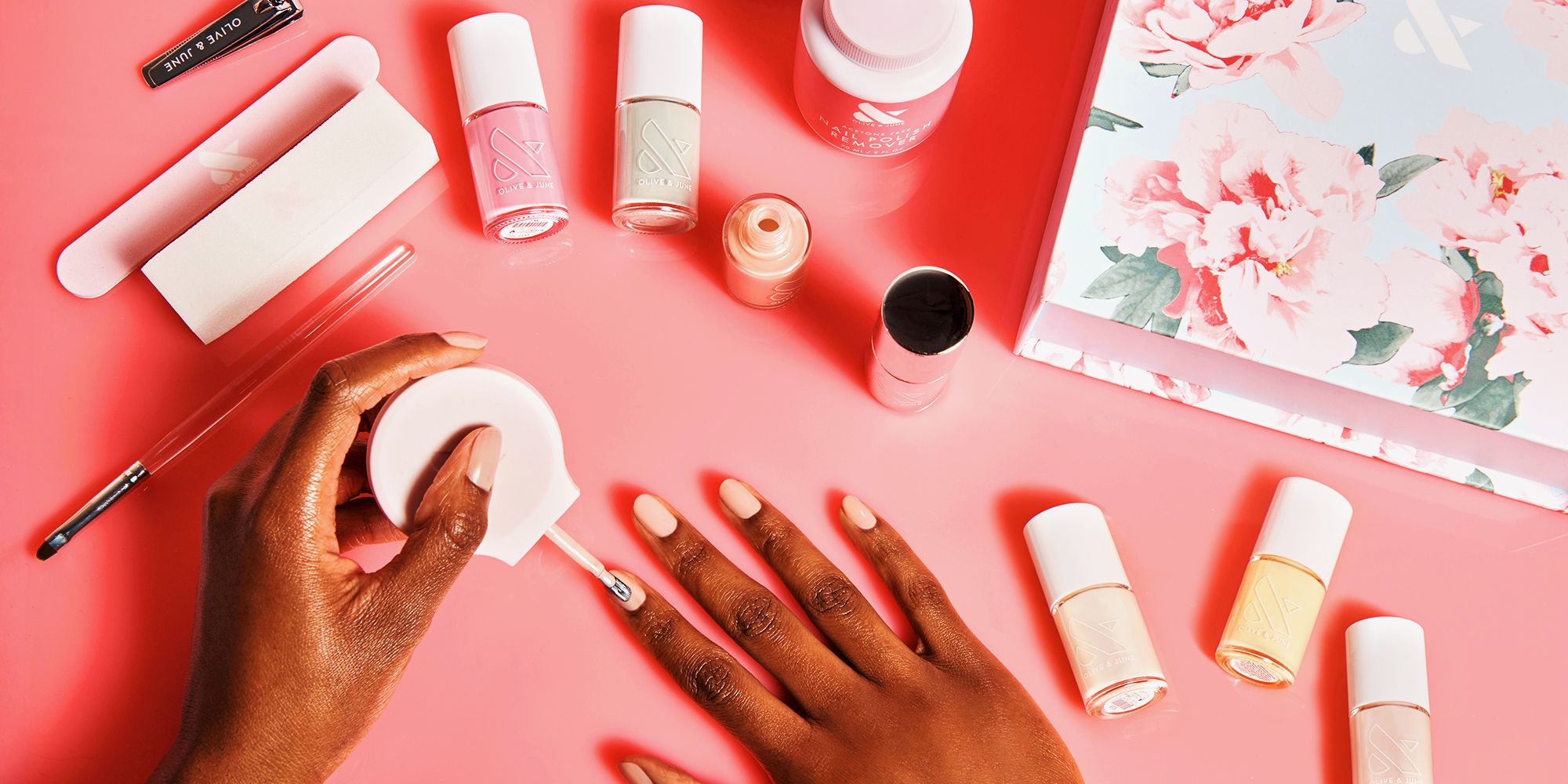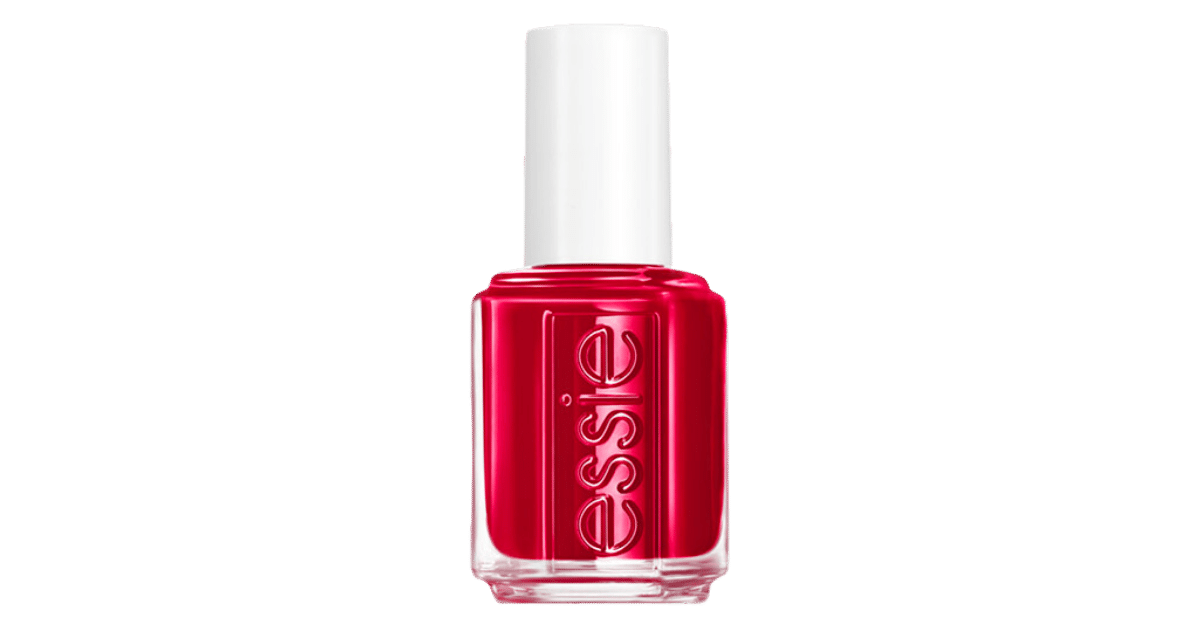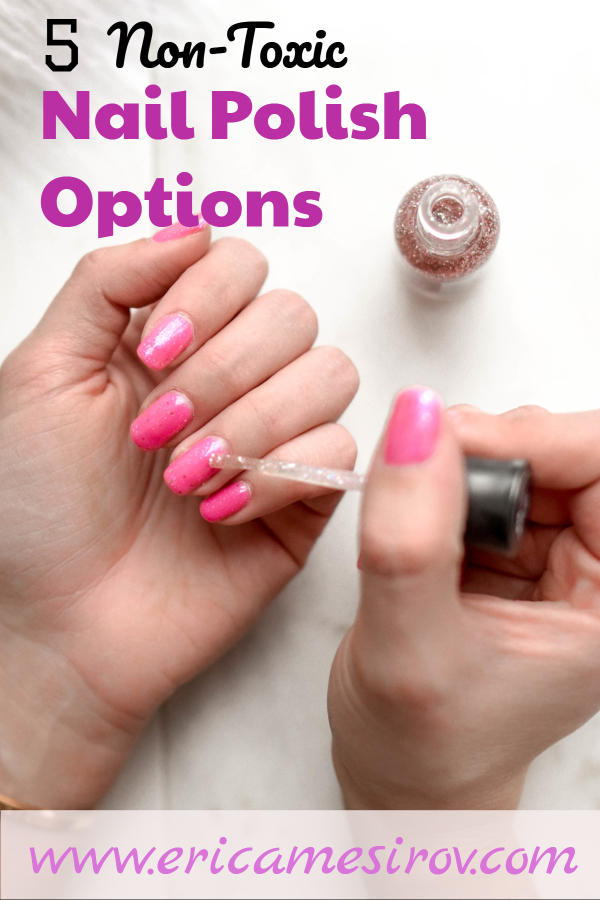Are you concerned about the safety of your nail polish? Essie, one of the most popular nail polish brands, has been a household name for decades. But with growing awareness about toxic chemicals in beauty products, many people are asking: Is Essie nail polish non-toxic? This article will explore the truth behind Essie's ingredients and help you make an informed decision.
As consumers become more health-conscious, understanding the ingredients in the products we use is essential. Nail polish, in particular, has faced scrutiny due to its potential health risks. Essie, known for its vibrant colors and high-quality formulations, claims to offer safer alternatives. But does it live up to its promises?
In this article, we’ll delve deep into the world of Essie nail polish, exploring its ingredients, potential risks, and what makes a product truly non-toxic. Whether you're a beauty enthusiast or simply looking for safer beauty options, this guide will provide you with the information you need to make an educated choice.
Read also:Mark Davis Commentator The Voice Behind The Game
Table of Contents
- Essie Nail Polish Overview
- Analyzing Essie's Ingredients
- What Makes Nail Polish Non-Toxic?
- Essie Compared to Other Brands
- Health Concerns with Nail Polish
- Safe Alternatives to Essie
- FDA Regulations on Nail Polish
- Consumer Reviews and Feedback
- Essie's Commitment to Sustainability
- Conclusion and Final Thoughts
Essie Nail Polish Overview
Essie has been a staple in the beauty industry since its inception in 1981. Founded by Ruth Schechter, the brand quickly became renowned for its innovative shades and professional-quality formulations. Today, Essie offers a wide range of products, from classic nail polishes to specialized treatments, catering to both salon professionals and everyday users.
What Sets Essie Apart?
One of the key factors that set Essie apart is its commitment to quality and safety. Over the years, Essie has made significant strides in reformulating its products to meet modern standards of safety. The brand has removed many harmful chemicals traditionally found in nail polish, aligning itself with the growing demand for safer beauty products.
Why Should You Care About Non-Toxic Nail Polish?
The chemicals in nail polish can have long-term health effects, especially with frequent use. Understanding the ingredients in your nail polish is crucial for maintaining good health. Essie's efforts to create safer formulations have made it a popular choice for those seeking non-toxic options.
Analyzing Essie's Ingredients
When it comes to nail polish, the ingredients list can be overwhelming. Essie has taken steps to simplify this process by clearly labeling its products and removing harmful chemicals. Let’s break down the key ingredients in Essie nail polish and what they mean for your health.
Key Ingredients in Essie Nail Polish
- Toluene-Free: Essie nail polish is free from toluene, a chemical linked to respiratory issues and developmental problems.
- Dibutyl Phthalate (DBP)-Free: DBP, a plasticizer used to improve flexibility, has been removed from Essie's formulations due to its potential health risks.
- Formaldehyde-Free: Formaldehyde, a known carcinogen, is no longer present in Essie nail polishes.
Additional Chemicals to Watch For
While Essie has eliminated many harmful chemicals, it’s important to stay informed about other potential toxins. Some nail polishes may still contain camphor, xylene, or other questionable ingredients. Essie's commitment to transparency ensures that consumers know exactly what they're applying to their nails.
What Makes Nail Polish Non-Toxic?
Defining "non-toxic" in the context of nail polish can be challenging. Generally, a non-toxic product is one that avoids harmful chemicals and prioritizes user safety. Essie meets many of these criteria, but there are additional factors to consider when evaluating a product's toxicity.
Read also:Mitchell Hess Net Worth The Complete Guide To His Wealth And Career
3-Free, 5-Free, and 10-Free Formulations
Many nail polish brands now advertise their products as "3-free," "5-free," or even "10-free." These terms refer to the number of harmful chemicals removed from the formulation. Essie offers both 3-free and 5-free options, depending on the product line. Understanding these distinctions can help you make a more informed purchase.
The Importance of Certifications
Third-party certifications, such as those from the Environmental Working Group (EWG), can provide additional assurance of a product's safety. While Essie does not currently carry such certifications, its commitment to removing harmful chemicals aligns with industry standards for non-toxic products.
Essie Compared to Other Brands
When it comes to non-toxic nail polish, Essie is far from the only option. Many other brands have entered the market, offering safer alternatives. How does Essie stack up against the competition?
Popular Non-Toxic Brands
- Zoya: Known for its 10-free formulations, Zoya offers a wide range of colors and finishes.
- Pacifica: This vegan brand emphasizes sustainability and uses only safe ingredients in its nail polishes.
- Acquarella: A water-based nail polish brand that eliminates almost all toxic chemicals.
Why Choose Essie?
While other brands may offer more stringent formulations, Essie's reputation for quality and reliability makes it a top choice for many consumers. Its vibrant colors and long-lasting finishes continue to attract both professionals and everyday users.
Health Concerns with Nail Polish
The potential health risks associated with nail polish extend beyond just the chemicals used. Prolonged exposure to toxic ingredients can lead to a variety of health issues, including respiratory problems, skin irritation, and even reproductive issues.
Common Health Risks
- Respiratory Issues: Inhalation of toxic fumes can cause shortness of breath and other respiratory symptoms.
- Skin Irritation: Some individuals may experience allergic reactions or irritation from certain chemicals in nail polish.
- Developmental Problems: Exposure to harmful chemicals during pregnancy can pose risks to fetal development.
How Essie Addresses These Concerns
Essie's commitment to removing harmful chemicals from its formulations helps mitigate many of these risks. By choosing Essie, consumers can enjoy vibrant nail polish without compromising their health.
Safe Alternatives to Essie
While Essie offers a range of non-toxic options, there are other brands worth considering if you're looking for safer alternatives. These brands often go beyond the standard 3-free or 5-free formulations, offering even more stringent safety measures.
Water-Based Nail Polishes
Water-based nail polishes, such as those from Acquarella, eliminate virtually all toxic chemicals. While they may not offer the same durability as traditional nail polishes, they provide a safer option for those with sensitive skin or respiratory issues.
Vegan and Cruelty-Free Options
Many non-toxic nail polish brands also prioritize ethical considerations, offering vegan and cruelty-free products. Brands like Pacifica and Zoya lead the way in this area, appealing to consumers who value sustainability and animal welfare.
FDA Regulations on Nail Polish
The U.S. Food and Drug Administration (FDA) regulates cosmetics, including nail polish, to ensure consumer safety. While the FDA does not approve individual products, it sets guidelines for acceptable ingredients and monitors compliance.
Key FDA Guidelines
- Prohibited Ingredients: The FDA bans certain chemicals, such as mercury and vinyl chloride, from use in cosmetics.
- Labeling Requirements: All cosmetics must clearly list their ingredients, allowing consumers to make informed choices.
- Safety Testing: Manufacturers are responsible for ensuring the safety of their products through rigorous testing.
How Essie Meets FDA Standards
Essie adheres to all FDA regulations, ensuring that its products meet the highest standards of safety and quality. By removing harmful chemicals and providing transparent labeling, Essie demonstrates its commitment to consumer safety.
Consumer Reviews and Feedback
Consumer feedback plays a crucial role in evaluating the safety and effectiveness of nail polish products. Reviews from real users can provide valuable insights into a product's performance and potential health risks.
Positive Feedback for Essie
Many users praise Essie for its vibrant colors, long-lasting finishes, and commitment to safety. Reviews often highlight the brand's efforts to remove harmful chemicals, making it a popular choice for health-conscious consumers.
Areas for Improvement
While Essie receives high marks for its safety and quality, some users express concerns about the durability of its non-toxic formulations. Others would like to see the brand pursue additional certifications to further validate its safety claims.
Essie's Commitment to Sustainability
In addition to safety, Essie has made strides in promoting sustainability within the beauty industry. From eco-friendly packaging to responsible sourcing, the brand continues to innovate in this area.
Eco-Friendly Packaging
Essie has introduced recyclable packaging for many of its products, reducing its environmental impact. The brand also encourages consumers to recycle their empty bottles, promoting a more sustainable approach to beauty.
Responsible Sourcing
Essie sources its ingredients responsibly, ensuring that they meet strict environmental and ethical standards. By prioritizing sustainability, Essie demonstrates its commitment to both consumer safety and environmental responsibility.
Conclusion and Final Thoughts
In conclusion, Essie nail polish offers a safer alternative to traditional formulations, making it a top choice for health-conscious consumers. By removing harmful chemicals and prioritizing transparency, Essie demonstrates its commitment to user safety and well-being. While there are other brands offering even more stringent formulations, Essie remains a reliable and trusted option for those seeking non-toxic nail polish.
We encourage you to explore Essie's range of products and consider how they align with your personal health and beauty goals. For more information on safe beauty choices, check out our other articles and resources. Don’t forget to share your thoughts in the comments below or share this article with others who may find it helpful!


